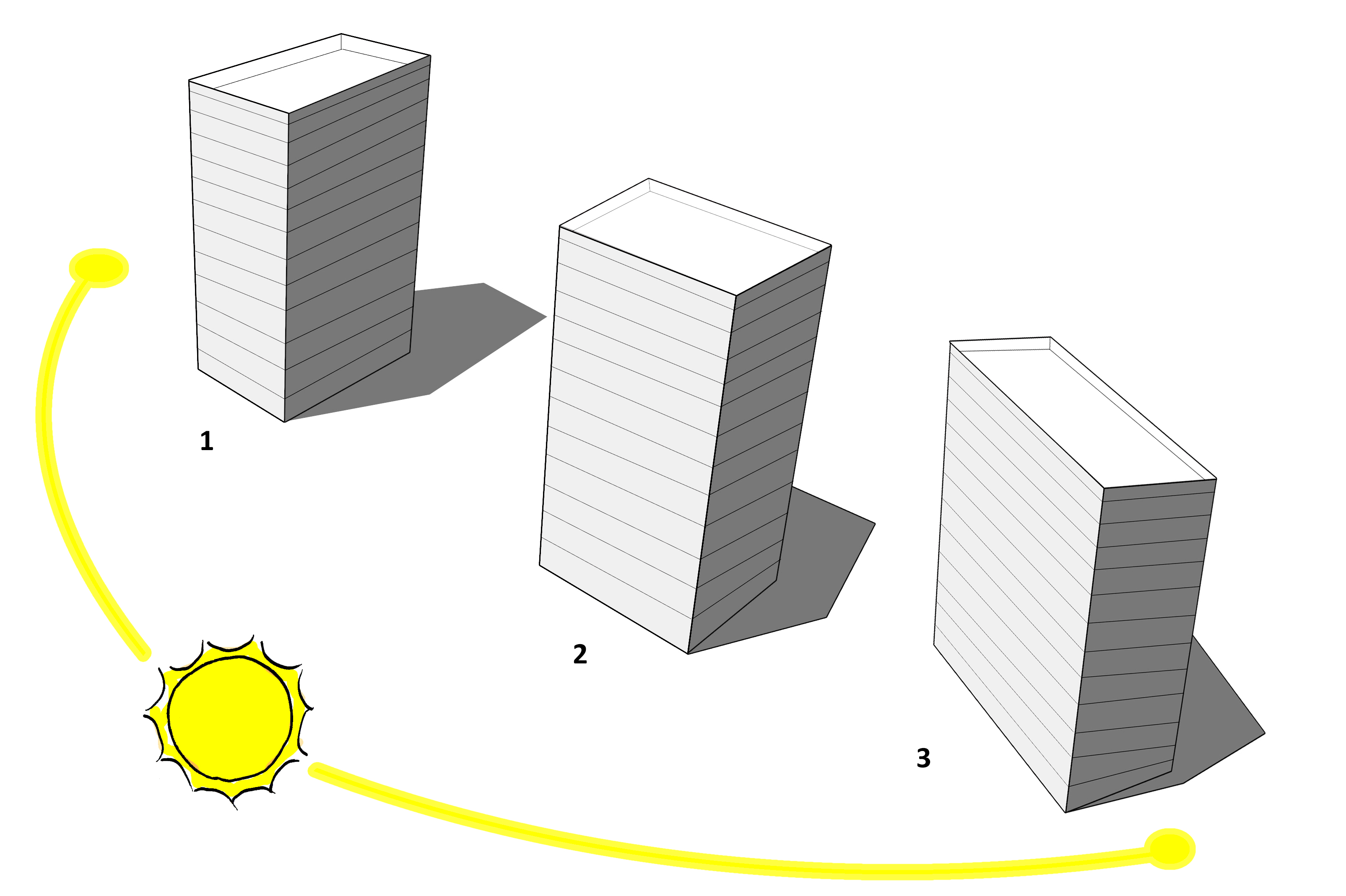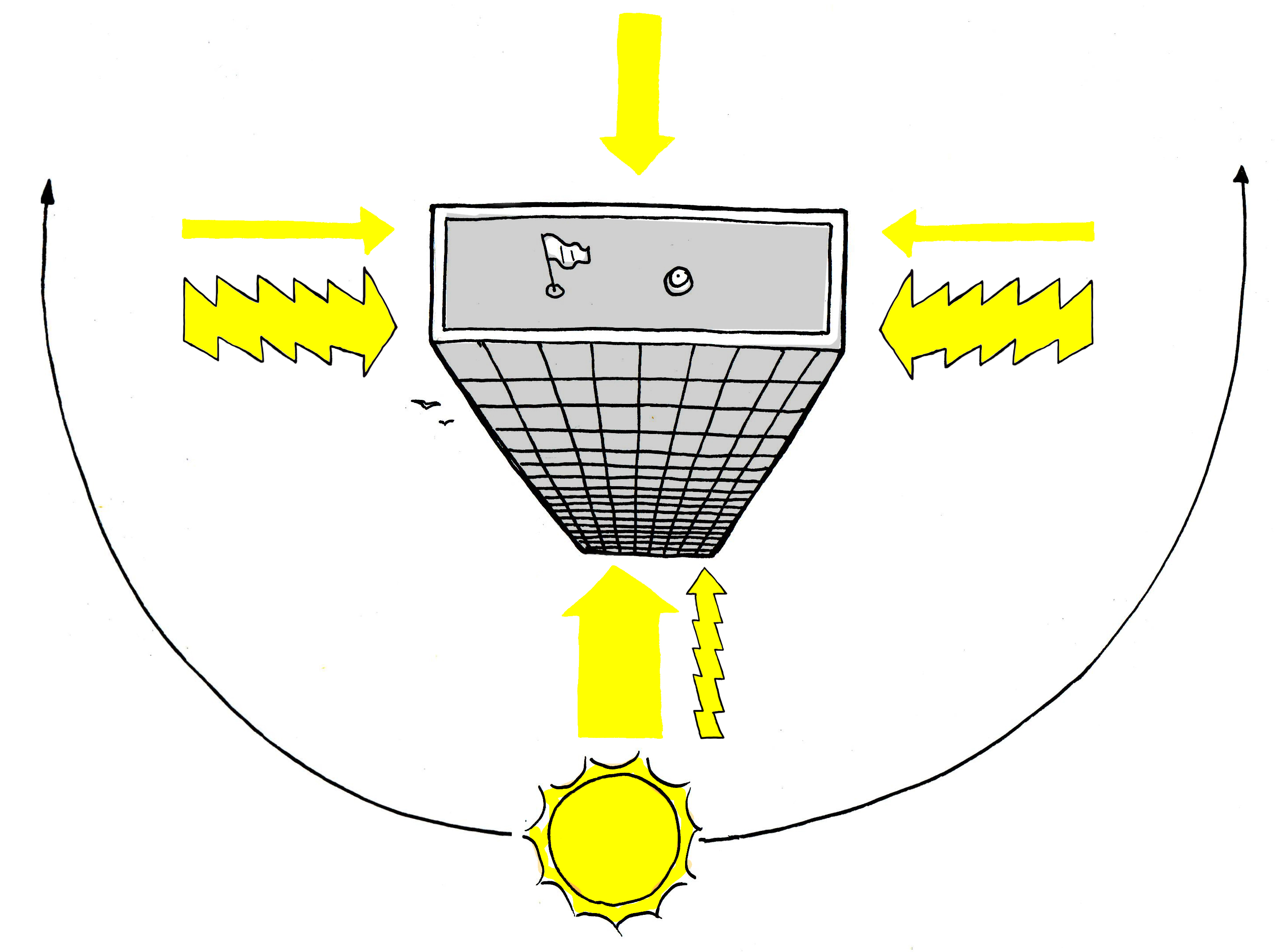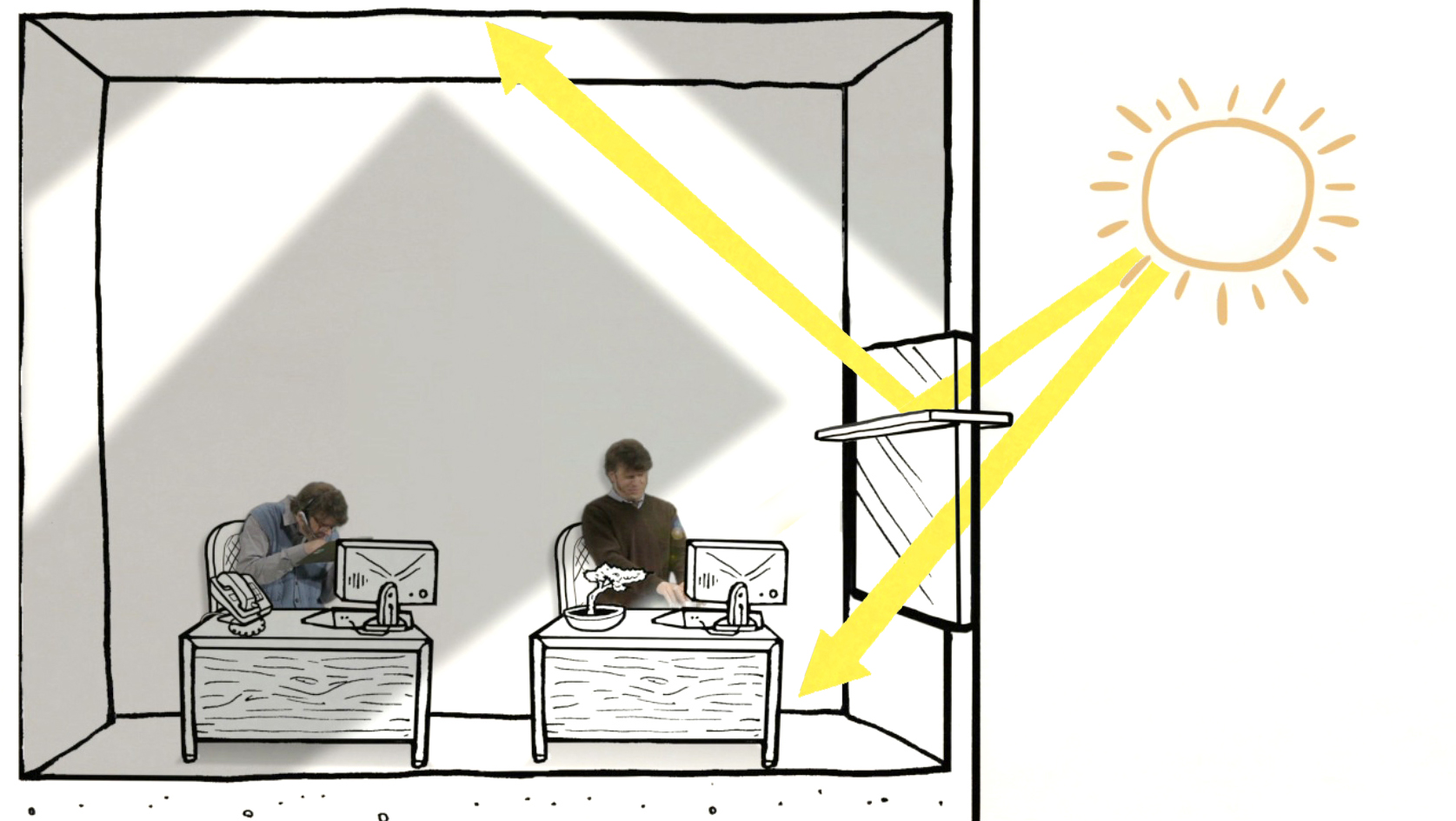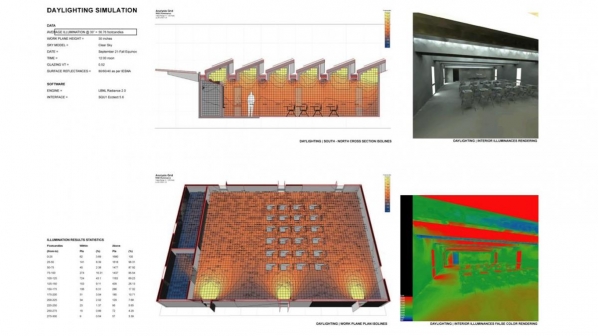You are here
Using daylight in your building is a key strategy for passive design. Letting sun into your building impacts visual comfort, as well as thermal comfort. Understanding how light from the sun enters a building as well as how to use the light once it is in a building are important considerations for successful daylighting.
Before diving into the details, watch this video. It's a great overview of the benefits daylighting provides and some basic strategies of how to implement it.
Like most things, daylighting has advantages and disadvantages. But by becoming skilled at understanding the technical components of daylighting, you can make sure to maximize the advantages and minimize disadvantages.
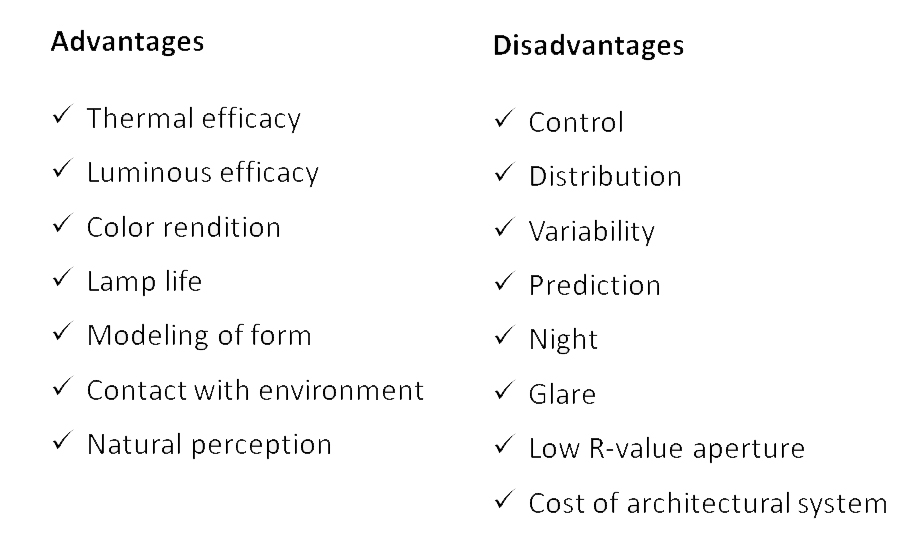 |
|
Advantages and disadvantages of daylighting Adapted from Leonard Bachman, University of Houston |
Sunlight vs. Daylight
Because the sun is predictable, daylight can be a reliable light source.
Sunlight is considered as the light that enters a space directly from the sun. This type of light is generally not good for lighting an interior space. Direct sunlight can produce glare and excessive heat gain.
Daylight or skylight describes the desirable natural light in a space. Daylight results in a perceived even distribution of light that avoids the glare and ill effects of direct sunlight. You can use BIM software tools to help improve your daylighting strategies (see Daylighting Analysis).
Although natural light comes from the sun, you don’t want direct sun for daylighting design.
- Daylight is diffuse natural light from the sky. For daylighting design, you DO want daylight.
- Sunlight is direct light from the sun itself. For daylighting design, you DON’T want sunlight. It creates light that is too intense and can bring unwanted heat.
Sky Conditions
The availability of daylight is dictated by the conditions of the sky at a given point in time; which is mostly controlled by the density of cloud cover. The International Commission On Illumination (CIE) classifies fifteen different types of sky conditions that can be associated with noticeably different luminance distributions.
When conducting daylighting analysis it is important to design for a range of conditions. This means making sure that you analyze a range of sky conditions, not just a bright and clear sky. It's unlikely that these conditions will be true for every hour of every day. Good analysis will consider bright and clear sky as well as an overcast sky.
Dive Deeper
Massing & Orientation for Daylighting
Massing and orientation are important design factors to consider for visual comfort, or daylighting. Many of the strategies are similar to those for passive heating, but also different factors, such as glare, to consider.Apertures for Daylighting
The locations and size of apertures matter a great deal if you want to utilize natural light in your building. Evenly-distributed light is critical to good daylighting, so apertures that are evenly distributed are useful.Redirecting Light
Redirecting light is the use of building elements to bounce sunlight into more desirable locations in the building. Light shelves and baffles are two strategies that can distribute light more evenly.Links and References
- Useful reference for Daylighting Calculations
- Draft of CIE sky condition classifications

